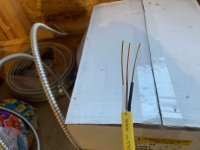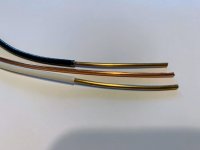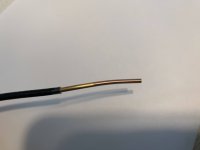makemenuconfig
Member
- Location
- Seattle, WA
- Occupation
- Journeyman
I wanted to dig up an old thread. This question got posed a few years ago, regarding off-color copper in southwire's romex.
There were several theories including it being oxidized, an alloy, counterfeit, plated, manufacturing issue, annealing issue, etc.
Yesterday I started using a new spool where the current-carrying conductors exhibit this issue. Kind of a gold/brass color. I'm kind of skeptical of it. All of the roll I've checked so far is like this. It seems like whatever caused this happened prior to its assembly into a cable in the factory.
Not sure if anybody from the original thread is around. Was curious if the poster ever heard back from the manufacturer (or got a callback from the customer I guess).


There were several theories including it being oxidized, an alloy, counterfeit, plated, manufacturing issue, annealing issue, etc.
Yesterday I started using a new spool where the current-carrying conductors exhibit this issue. Kind of a gold/brass color. I'm kind of skeptical of it. All of the roll I've checked so far is like this. It seems like whatever caused this happened prior to its assembly into a cable in the factory.
Not sure if anybody from the original thread is around. Was curious if the poster ever heard back from the manufacturer (or got a callback from the customer I guess).




